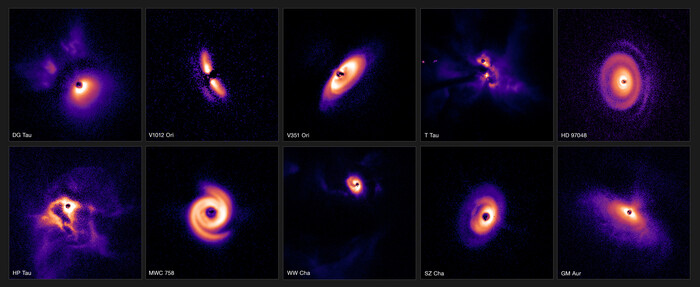Enlarge image
Illustration of the planetary system K2-138
Photo: piemags / IMAGO
There are places on earth that reach unimaginable dimensions - simply because they can hardly be seen with the naked eye.
The amount of water in the oceans is about as much.
It becomes even more confusing when you look into space.
For example, two exoplanets orbiting the star Kepler-138 at a distance of 218 light-years from Earth have a significantly higher proportion of water than our planet.
A team from the University of Montreal in Canada has been observing Kepler-138 for several years using the Hubble and Spitzer Space Telescopes and the large Keck reflecting telescope in Hawaii.
In this way, they succeeded in determining the sizes and masses of the two planets Kepler-138c and d, the most accurate to date: with a diameter of 1.5 Earth diameters each, they are so-called super-Earths.
The study was published in the journal Nature Astronomy.
This in itself is not news to astronomers: numerous planets that are larger versions of the rocky inner planets of our solar system are already known.
What is surprising, however, is the mass of the planets, which is only 2.1 and 2.3 times the mass of the Earth.
If the two planets - like Earth - consisted almost entirely of rock, about 3.4 Earth masses would be expected.
Bigger than Earth and remarkably light
The researchers conclude that a large part of these planets must consist of lighter material than rock.
Model calculations suggest that the substance in question is probably water.
Accordingly, Kepler 138c and d have a core of iron and a mantle of rock, similar to the Earth - but this is surrounded by a layer of water about 2000 kilometers thick.
The average depth of the oceans on Earth is four kilometers.
However, the theory could not be proven with certainty.
"Until now, we thought that planets slightly larger than Earth were big spheres of metal and rock, enlarged versions of Earth, so to speak, and that's why we called them 'super-Earths'," said Björn Benneke, who worked on the study. according to a statement.
"This is the first time we've observed planets that can be safely described as water worlds, a type of planet that astronomers had long ago hypothesized existed."
However, the water masses on the exoplanets are probably not deep oceans that would resemble our oceans.
"The temperature on these planets is above the boiling point of water," said Caroline Piaulet, first author of the study.
"We therefore expect a dense atmosphere of water vapor." But the pressure eventually increases so much downwards that the water can liquefy even at these temperatures.
"The water may also be supercritical," she continued.
It would then be as dense as a liquid, but would have the same mobility as a gas.
ani/dpa


/cloudfront-eu-central-1.images.arcpublishing.com/prisa/PA5TT2ZCYBDNLEAREMUPESRVOM.jpg)
/cloudfront-eu-central-1.images.arcpublishing.com/prisa/TQ73US57UFGWTIXR7C3BS2OTIA.jpg)



